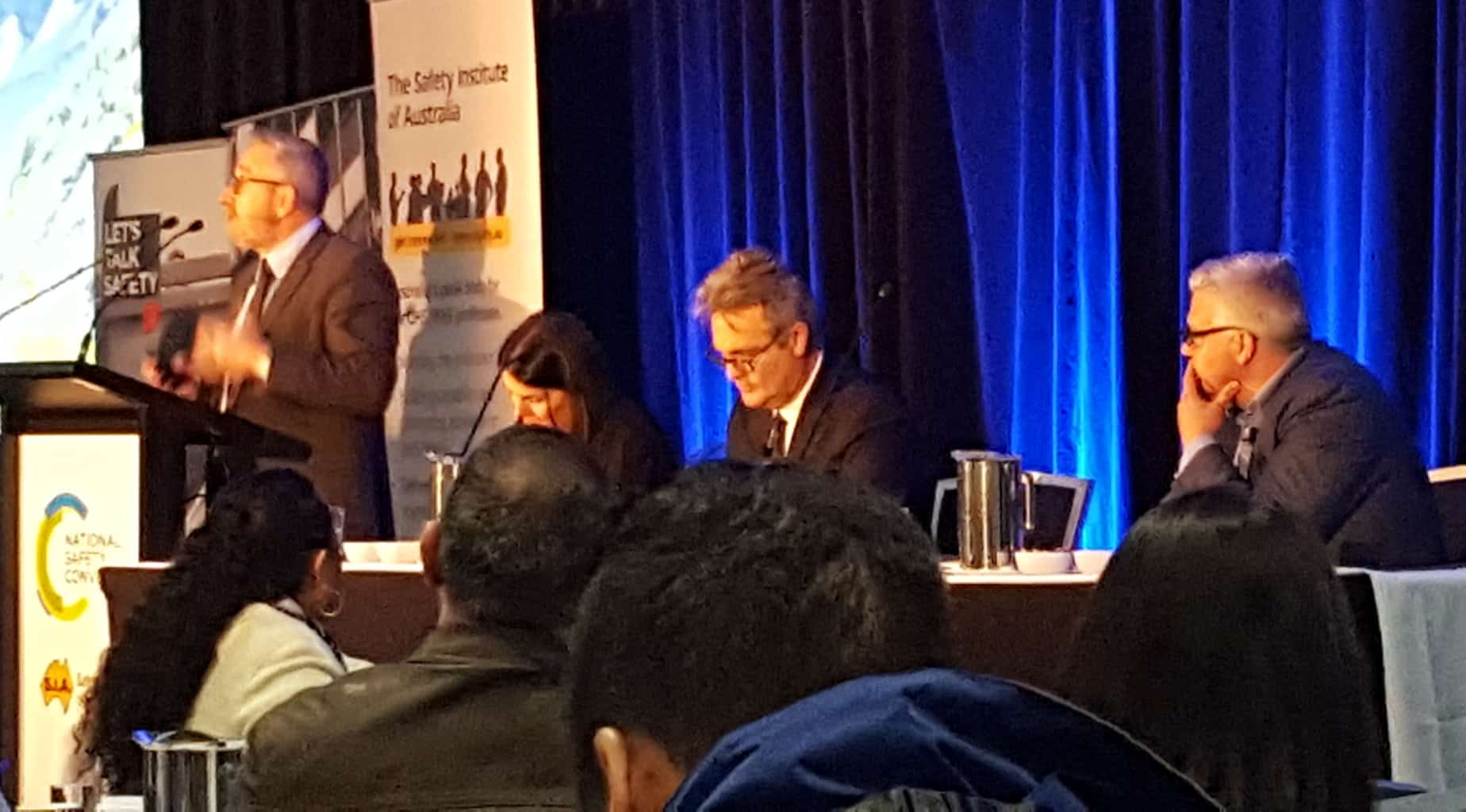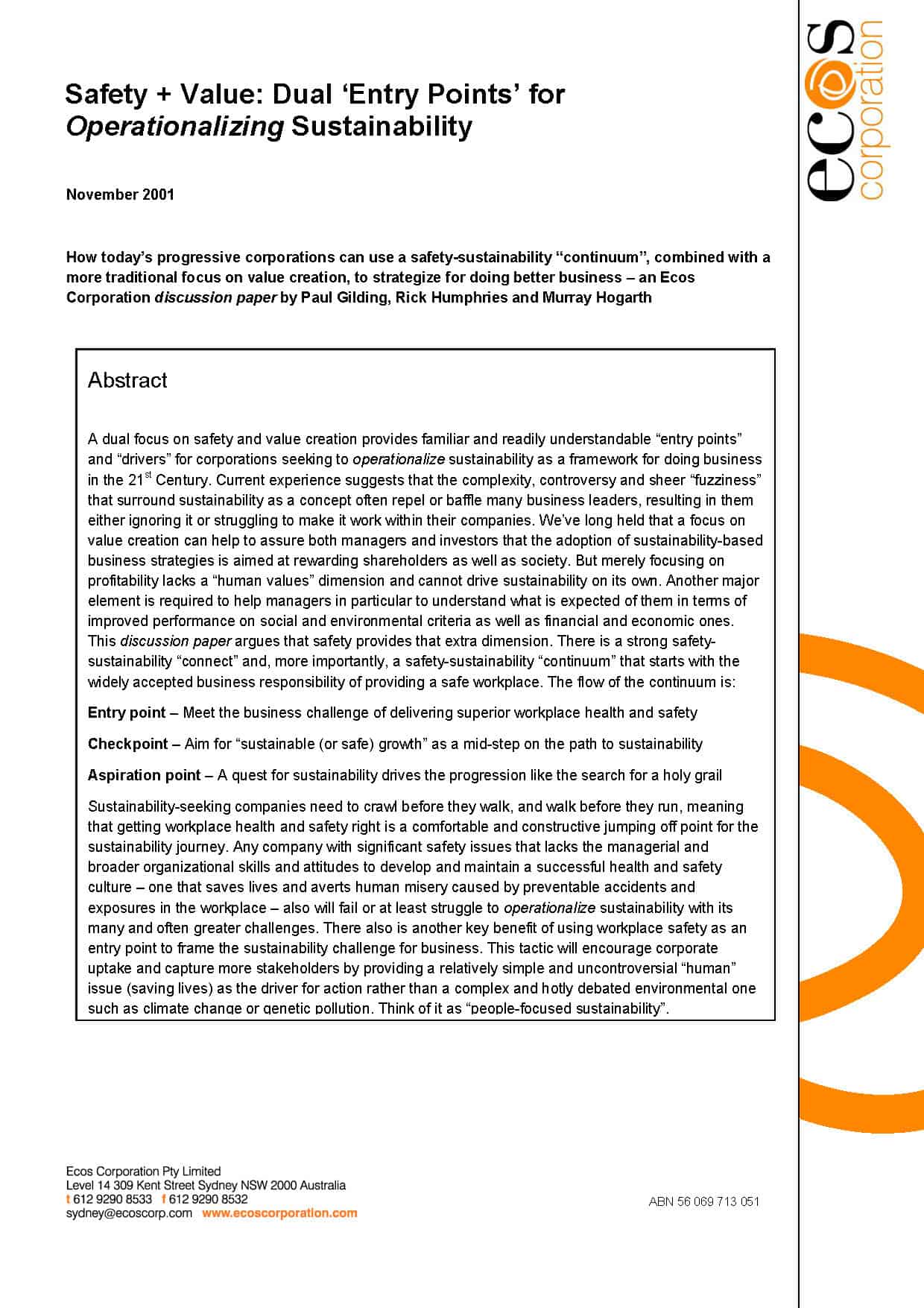[This article from 2015 was previously password-protected and is now available to all] Recently a couple of media outlets referred to a report produced by Citi into workplace safety issues related to the top 100 companies on the Australian stock exchange. The report, “Safety Spotlight: ASX100 Companies & More” (not available online), provides a useful…
Category: innovation
Andrew Hopkins supports the abandonment of safety culture
Culture and safety culture are misunderstood and abused terms, according to Professor Andrew Hopkins speaking at the SIA Safety Convention in Sydney today. His perspective as a social scientist reinforces many of the speakers on disruption at yesterday’s sessions. If culture is the characteristic of individuals, culture is transferable or portable outside the workplace but…
Safety disruption gets context
The second session of the SIA National Convention is flatter than the the first, not because it is not interesting but because it is providing us with the social context for occupational health and safety (OHS) rather than challenging the OHS profession.
Bernard Salt is a very high profile demographer whose job is almost entirely about providing social context to whatever we do. He mentioned OHS specifically only four times and then primarily to do with driving trucks but the age data Salt presented shows the need for improvement in the health and wellbeing of the workforce so that quality of life can extend in line with the extended period of our lives.
 Peter Gahan (pictured right, speaking)of the Centre of Workplace Leadership is a regular speaker at the Safety Institute of Australia’s conferences. His outline reflects the theme of this conference by disrupting our sense of security and career.
Peter Gahan (pictured right, speaking)of the Centre of Workplace Leadership is a regular speaker at the Safety Institute of Australia’s conferences. His outline reflects the theme of this conference by disrupting our sense of security and career.
The challenge comes from how we respond to this unease. If we curl up on the couch to binge watch a show, the career is over. We need to look for the opportunities that the disruption offers but this may require us to reassess, if not throw out, the foundations of our profession or the dreams on which we chose our career.
Richard Coleman is well known in the Australian OHS profession through his prominent safety career. His attraction as a conference speaker was on display because he was able to adjust his presentation to accommodate the examples and context that previous speakers addressed. Coleman focused on the digital disruption, particularly as it affects blue collar occupations. He believes that some of these jobs will go within the next five years.
Coleman’s focus on digital disruption provided a great summary of the OHS application of augmented reality and wearable technology. The latter has the best opportunity for safety improvement, particularly in the area of manual handling. Sensor technology can provide better levels of information and in real time that allows immediate interventions at times of great risk.
What these speakers and the panel are all about is to think creatively and think big. Fantasise about your job and the tasks you do now and whether they will exist in ten years and how you can change them now to prepare for the future. If your job leads to a dead-end, change the job. It seems easier to do this now, than ever before
OHS conference hears of a bleak future
What do you do when the first speaker at a safety conference makes a strong argument that occupational health and safety (OHS) activities are likely to be automated out of existence within twenty years? Dr Drew Rae opened the SIA Safety Convention with just such a statement. This was reinforced by Andrew Harris of Laing O’Rourke who provided video evidence of an artificial intelligence that could identify that a worker was not wearing the required personal protective equipment.
The Convention’s theme is disruption as this is one of the current business buzzwords and safety people think disruption is a positive experience. But it is possible that disruption will erode the OHS profession IF that profession continues handling its knowledge and supporting its members in the same way.
At the Eric Wigglesworth Memorial Lecture on 5 September, Dr David Borys further disrupted the OHS profession by questioning its knowledge base and although an academic himself and a major participant in the Safety Institute of Australia’s Body of Knowledge, advocated a Body of Evidence rather than a Body of Knowledge. What this also did was cut across the core structure of the SIA which is wrapped around academic education. Borys was very disruptive in a polite way.
The first session of this conference confirms the understanding that the best safety thinking comes from outside the safety profession. The future of the safety profession will come from how the safety profession responds to change and several speakers have mentioned extinction.
It’s a good start to this conference.
Don’t kill anyone. Don’t seriously injure anyone.
 Michael Tooma (pictured right) has been a leading writer on occupational health and safety (OHS) law in Australia for some time. He is one of the few labour lawyers who is not afraid to express an opinion although he has always spoken within the legal context.
Michael Tooma (pictured right) has been a leading writer on occupational health and safety (OHS) law in Australia for some time. He is one of the few labour lawyers who is not afraid to express an opinion although he has always spoken within the legal context.
Recently Tooma participated in a roadshow with
Prescient research on OHS, values and sustainability
 It has become fashionable to place occupational health and safety (OHS) in the organisational context of business sustainability. But this is not a new phenomenon in Australia. In 2001 the Ecos Corporation published a discussion paper called “Safety + Value: Entry Points for Operationalizing Sustainability.”* It states
It has become fashionable to place occupational health and safety (OHS) in the organisational context of business sustainability. But this is not a new phenomenon in Australia. In 2001 the Ecos Corporation published a discussion paper called “Safety + Value: Entry Points for Operationalizing Sustainability.”* It states
“A dual focus on safety and value creation provides familiar and readily understandable “entry points” and “drivers” for corporations seeking to operationalize sustainability as a framework for doing business in the 21st Century.”
Ernst Young’s latest safety discussion paper
Ernst Young (EY) Australia has released a discussion paper about its “Plus One” strategy for occupational health and safety (OHS) and safety culture change. Perhaps the curious and significant issue raised in the document is the way it considers that the “zero harm” era is over.
The document urges people to “build on the lessons of zero harm”. Some would say that the most important lesson is that “zero harm” is bullshit but EY is almost taking “zero harm” as a fixed point in time, or rather a point in thought, from which progress in a new direction is possible. Continue reading “Ernst Young’s latest safety discussion paper”
